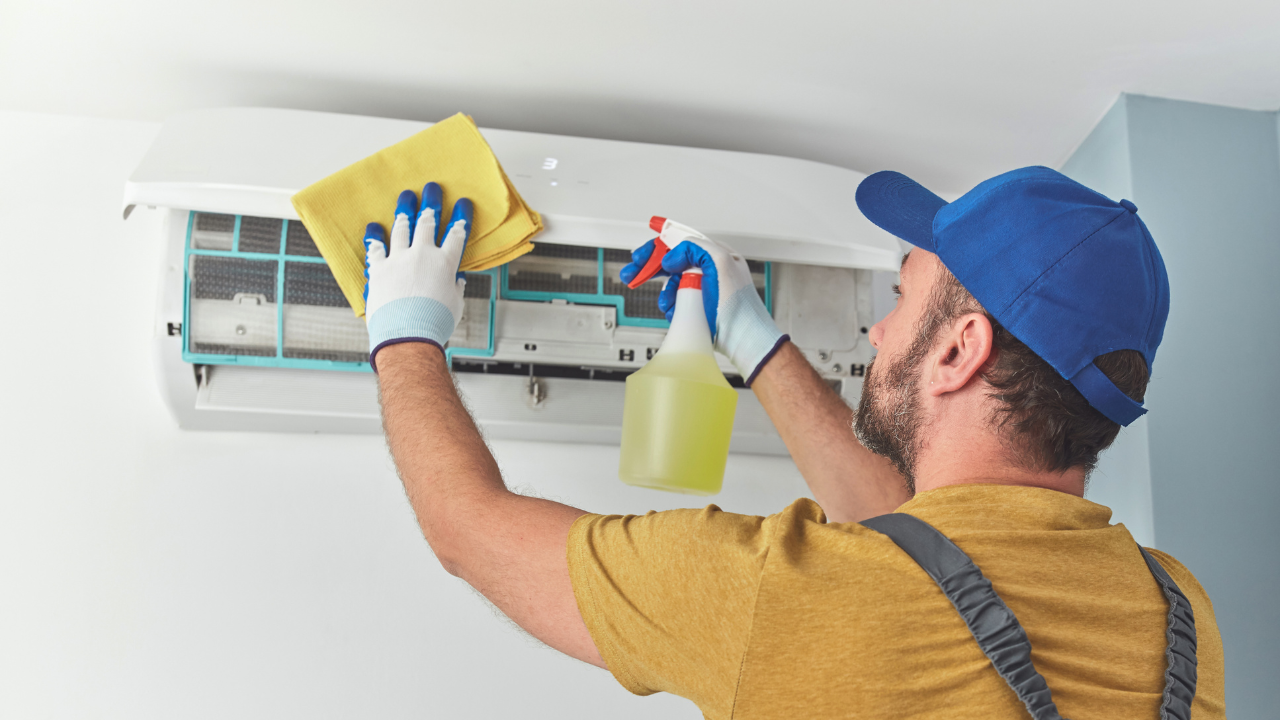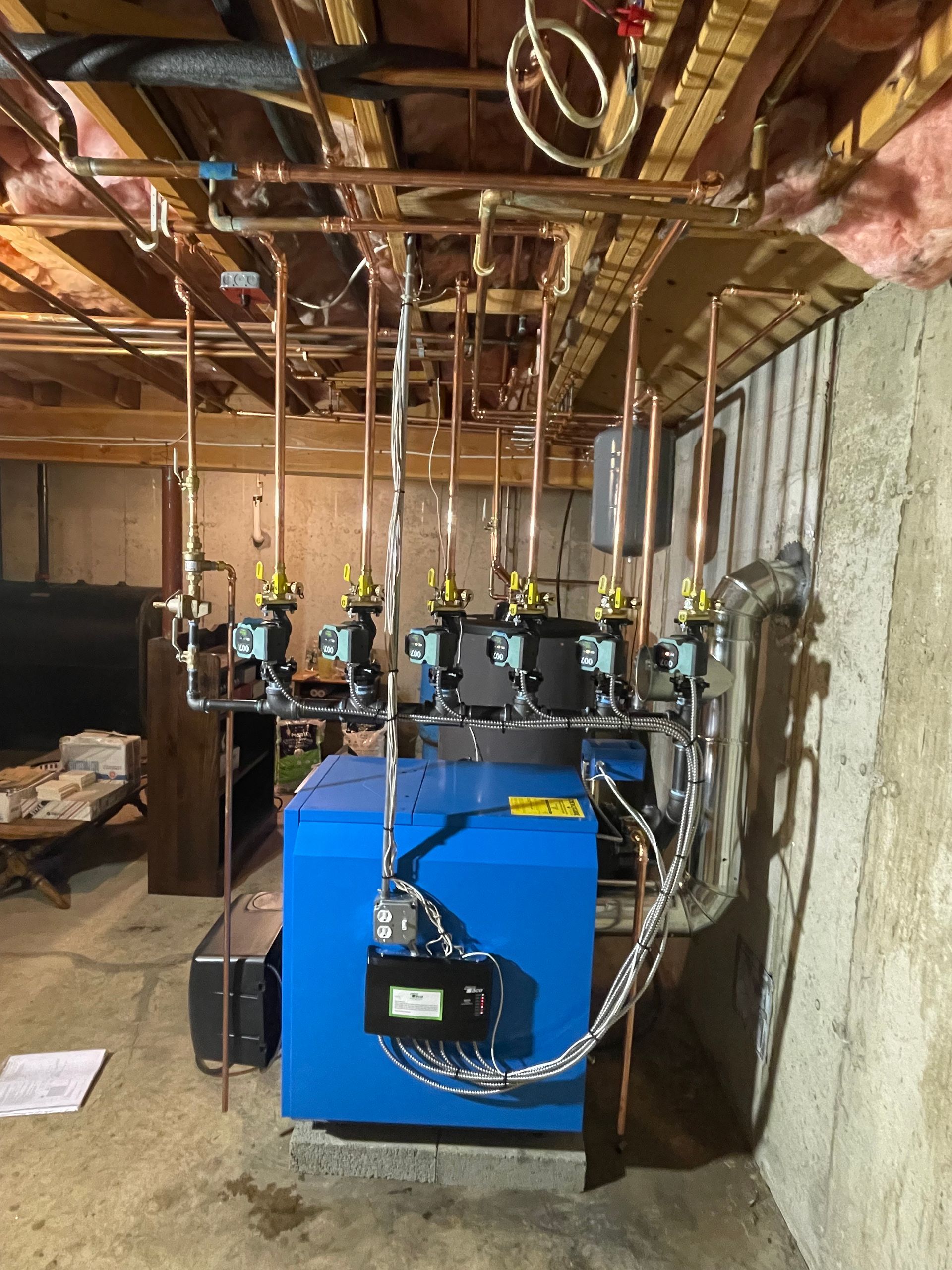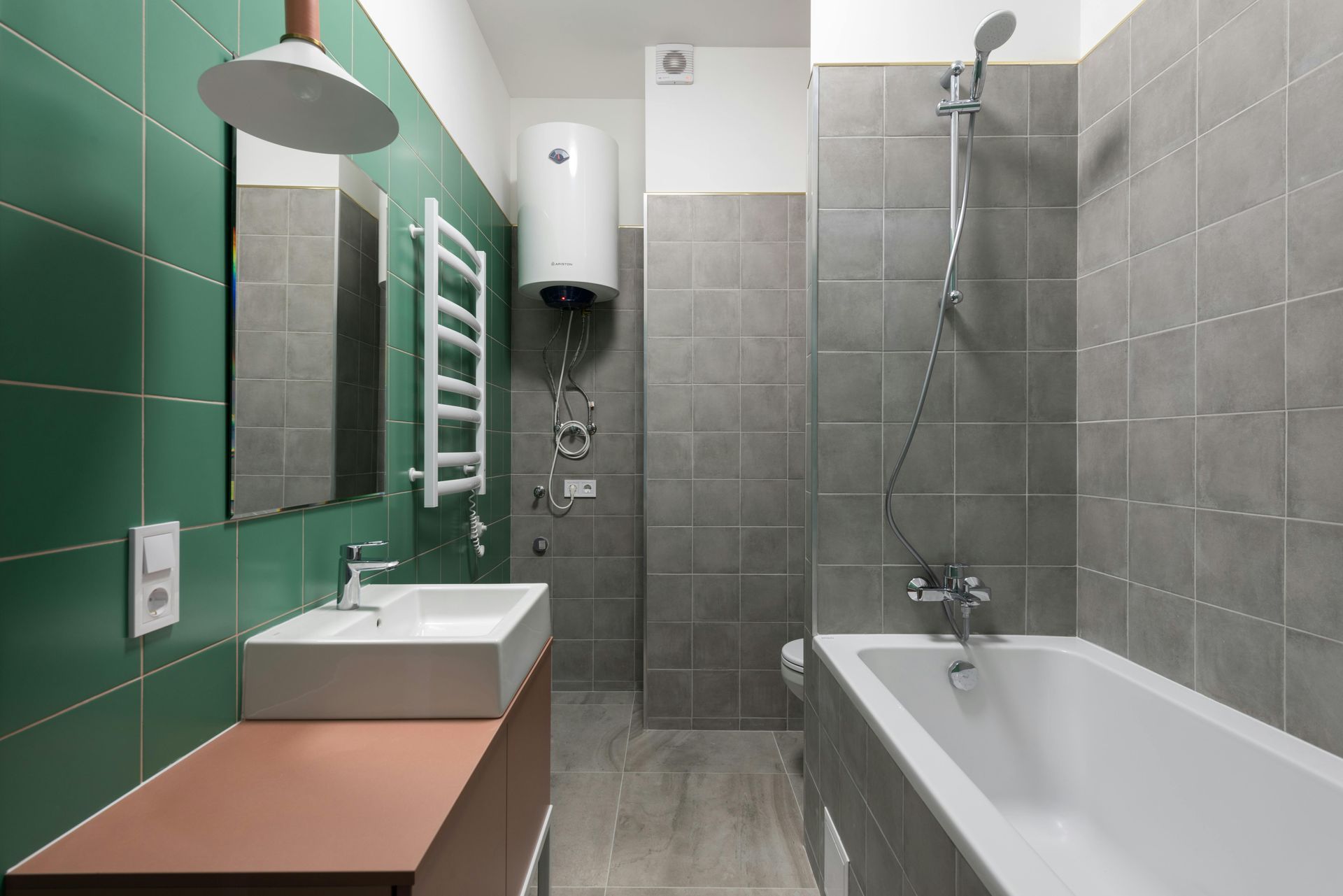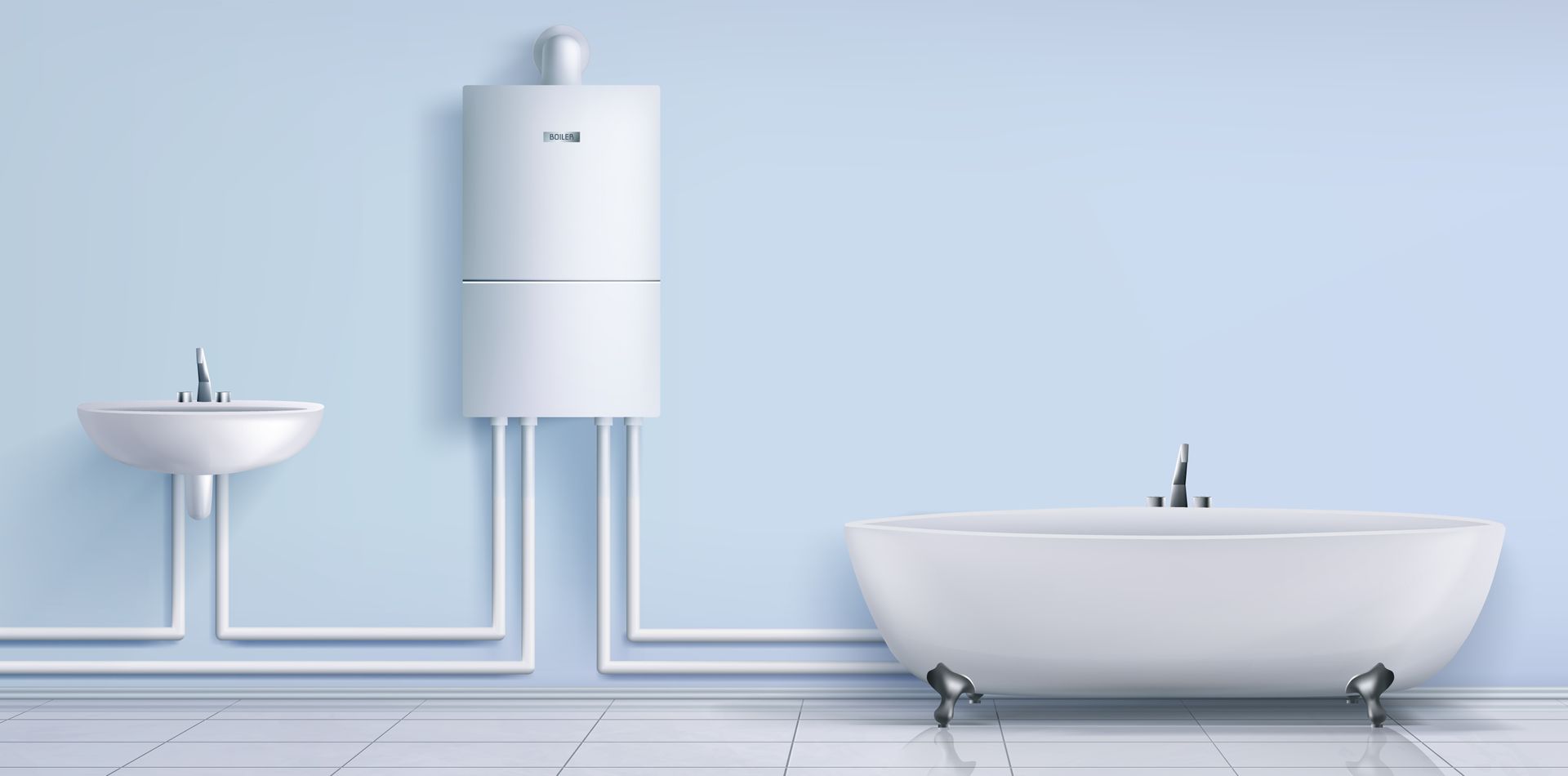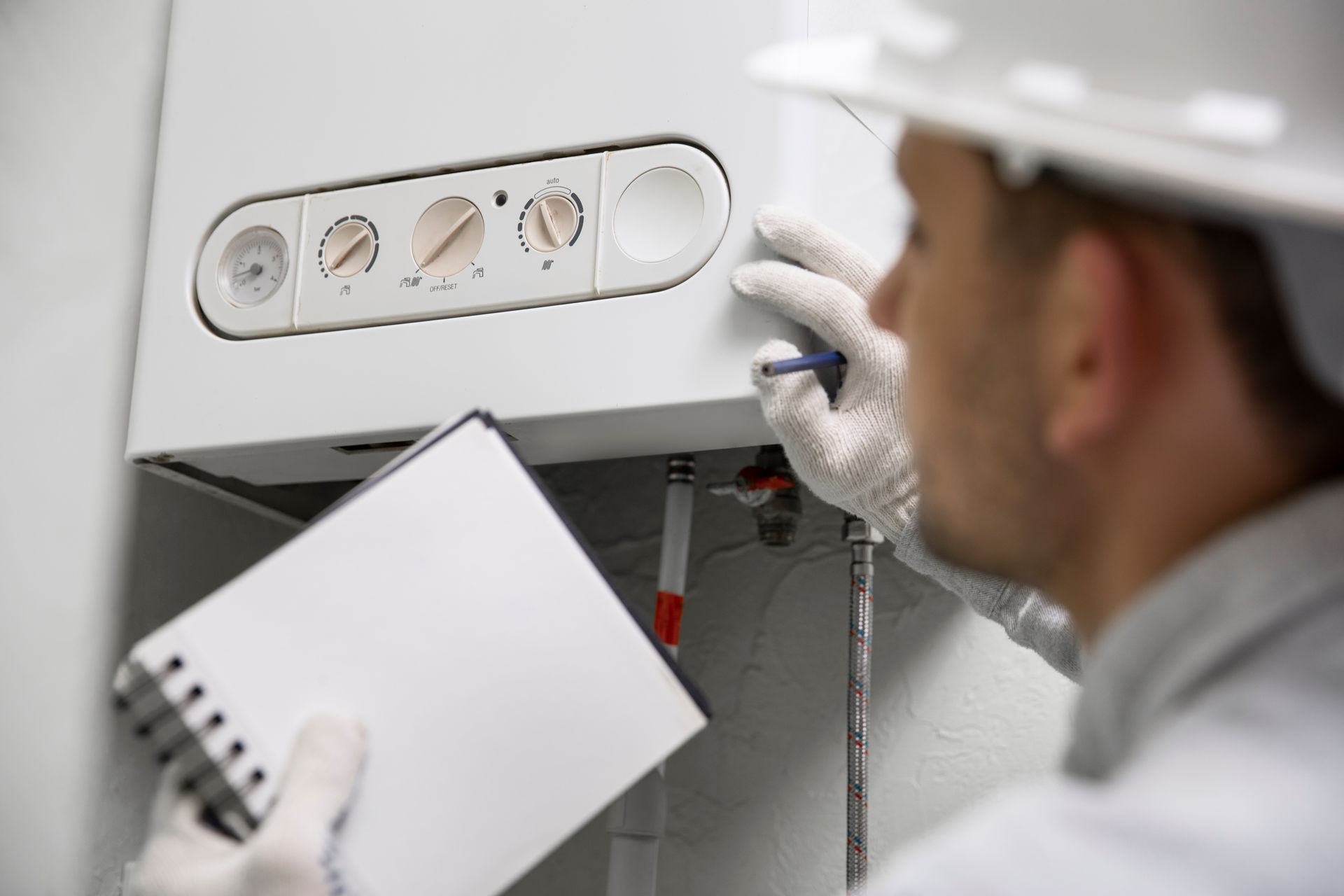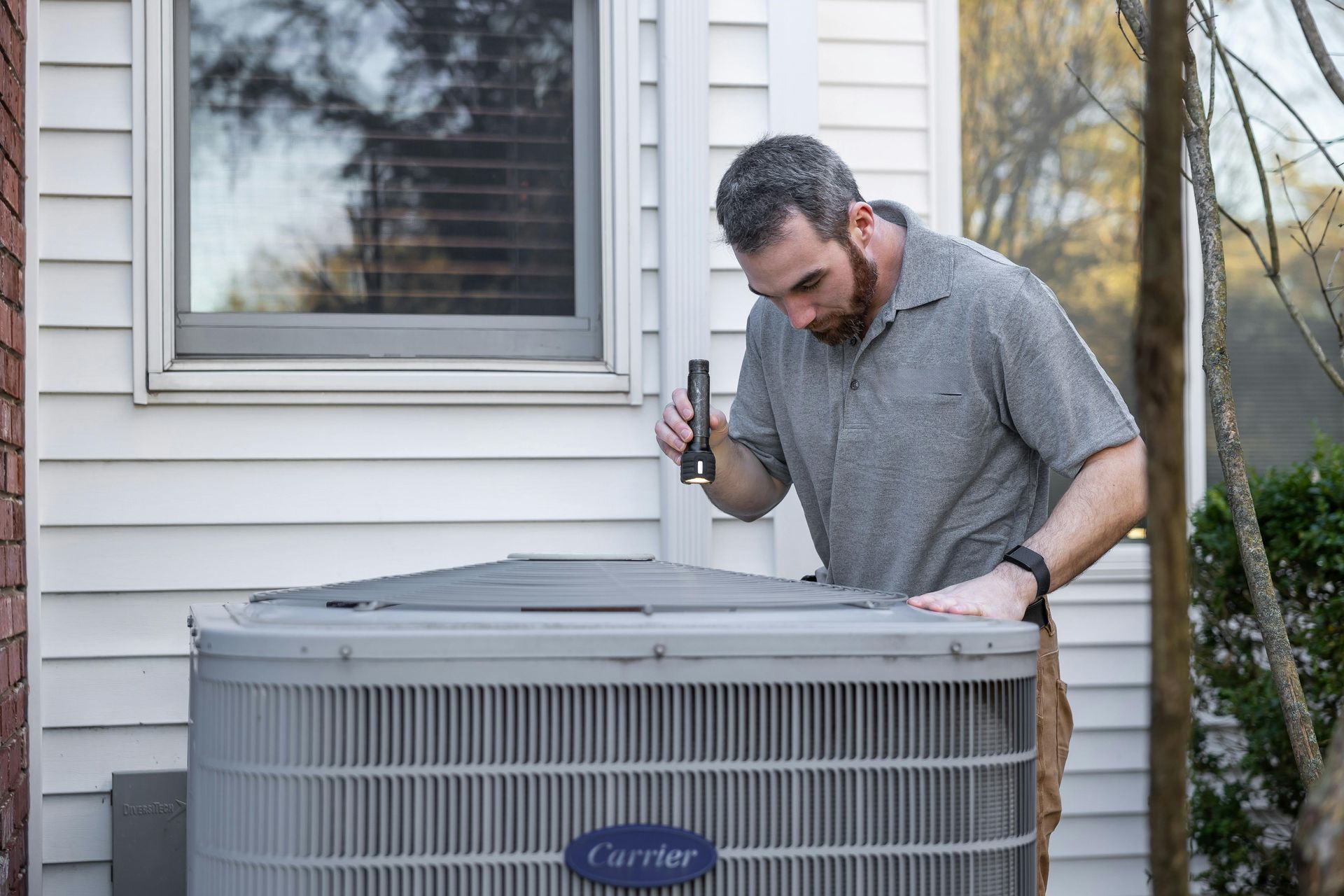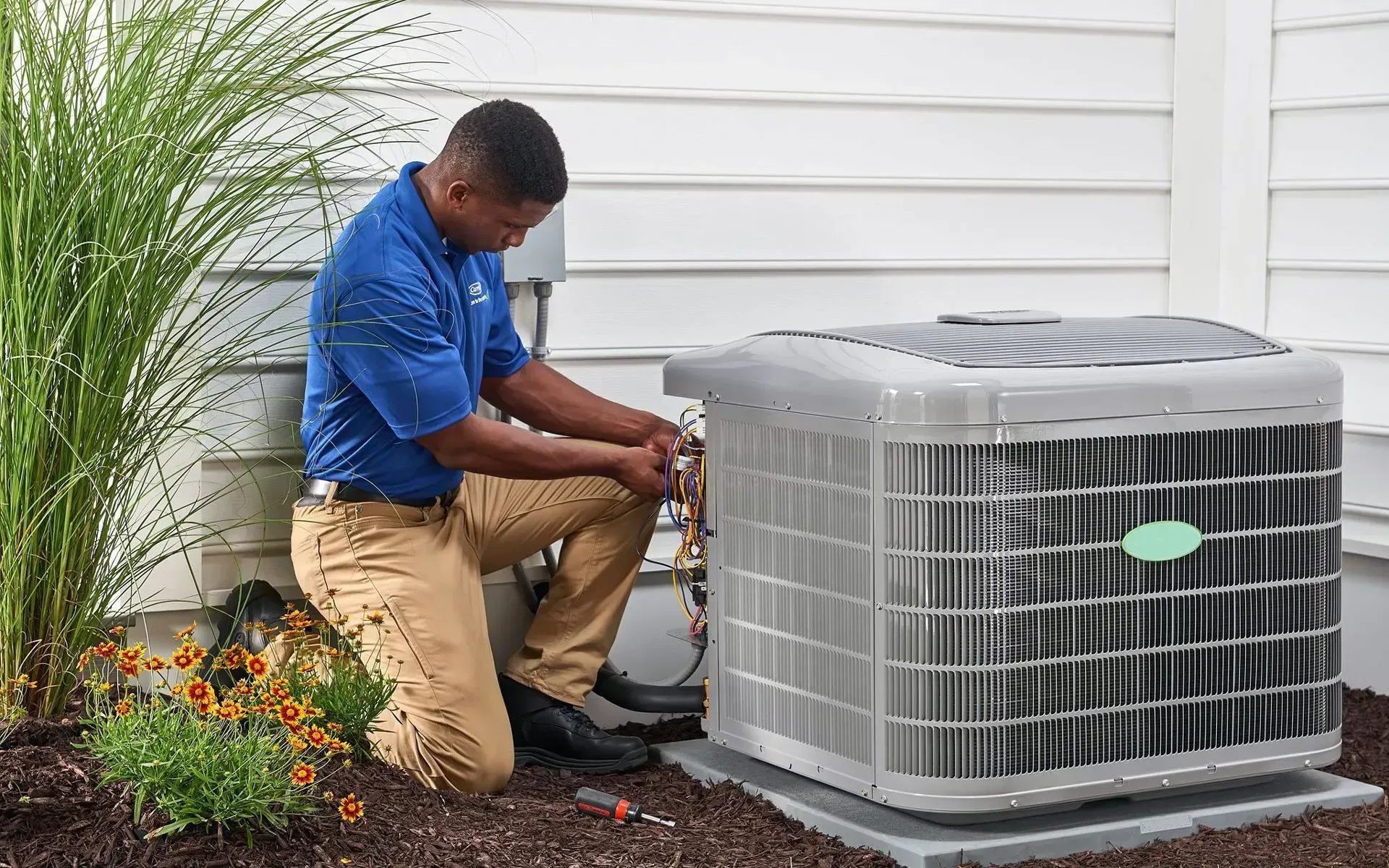How to Clean Your Tankless Water Heater
If you live in Bristol, Connecticut, chances are you've noticed the white buildup around your faucets and showerheads. That's mineral deposits from our local water, and the same thing is happening inside your tankless water heater.
The good news? With regular cleaning and maintenance, your tankless unit can provide reliable hot water for decades. We've put together this comprehensive guide to help Bristol homeowners understand everything about keeping their tankless water heaters running smoothly.
Why Your Tankless Water Heater Needs Regular Cleaning
Think of your tankless water heater like the arteries in your body - when they get clogged up, everything stops working properly. Bristol's water contains naturally occurring minerals like calcium and magnesium that build up inside your unit over time. This isn't necessarily bad water, but it does mean your appliances need more attention than they would in softer water areas.
What Happens When Minerals Build Up
When these minerals accumulate in your tankless water heater, several problems start developing. The heat exchanger, which is the heart of your system, begins to get coated with scale. This coating acts like a blanket, making it much harder for heat to transfer from the burner to the water flowing through.
As this buildup gets thicker, your water heater has to work increasingly harder to heat the same amount of water. The Department of Energy has found that just a tiny bit of scale buildup - we're talking about 1/16 of an inch - can reduce your heating efficiency by more than 10%. In Bristol homes with hard water, this can happen surprisingly quickly.
Your monthly energy bills start creeping up because the unit is working overtime. Water flow begins to slow down, so you might notice weaker pressure in your shower or it takes longer to fill a sink. The unit might start making unusual noises as it struggles to function, and you'll probably see error codes popping up on the display more frequently.
The Long-Term Impact on Your Investment
Here's something that might surprise you: a well-maintained tankless water heater can easily last 20 years or more. But neglected units often start having major problems after just 7 to 10 years. When you consider that a quality tankless water heater is a significant investment - often several thousand dollars - regular cleaning literally pays for itself by doubling the life of your equipment.
We've seen Bristol homeowners who diligently clean their units every six months still using the same water heater after 15 years. Meanwhile, their neighbors who skipped maintenance ended up replacing their units twice in the same time period.
TL;DR - Why Cleaning Matters:
- Mineral buildup reduces efficiency by 10%+ and increases energy bills
- Scale acts like insulation, making your unit work harder to heat water
- Regular cleaning can double your water heater's lifespan (20+ years vs 7-10 years)
- Prevents reduced water flow, unusual noises, and error codes
- Protects your multi-thousand dollar investment
When Should You Clean Your Tankless Water Heater?
The timing for cleaning your tankless water heater depends largely on Bristol's water conditions and how much hot water your family uses. We've developed recommendations based on years of serving local homeowners.
Creating Your Cleaning Schedule
For most Bristol residents, we recommend cleaning every six to eight months. However, if you live in an area with particularly hard water or use a lot of hot water daily, you might need to clean every three to four months. If you're lucky enough to have soft water or use a whole-home water softener, annual cleaning might be sufficient.
The key is consistency. It's much easier to remove light mineral buildup every few months than to deal with heavy accumulation that's been building for years.
Warning Signs That Cleaning Can't Wait
Your tankless water heater will tell you when it needs attention. If you notice the water temperature fluctuating during your shower - going from hot to warm to hot again - that's often a sign of mineral buildup interfering with proper heating.
Reduced water flow is another red flag. If your shower pressure isn't what it used to be, or filling the kitchen sink takes noticeably longer, scale buildup might be restricting water flow through the heat exchanger.
Error codes on your unit's display are definitely worth paying attention to. While not all error codes indicate cleaning needs, many are related to flow or temperature issues that cleaning can resolve.
Listen to your water heater too. Unusual noises during operation, especially rumbling or banging sounds, often indicate that the unit is working harder than it should due to mineral buildup.
TL;DR - When to Clean:
- Regular schedule: Every 6-8 months for most Bristol homes
Hard water areas: Every 3-4 months
Soft water/water softener: Annually
Emergency cleaning needed if you notice: - Temperature fluctuations during use
- Reduced water flow or pressure
- Error codes on display
- Unusual noises (rumbling, banging)
Step-by-Step Cleaning Process
Cleaning your tankless water heater might seem intimidating, but it's actually a straightforward process that most Bristol homeowners can handle themselves. The key is taking your time and following each step carefully.
Gathering Your Supplies
Before you start, make sure you have everything you need. You'll need a submersible pump - the kind used for draining basements works perfectly. A 5-gallon bucket is essential for holding your cleaning solution. You'll need two washing machine hoses, which you can find at any hardware store in Bristol.
For the cleaning solution itself, white vinegar works excellently for most situations. It's safe, effective, and won't damage your system.
Some homeowners prefer commercial descaling solutions, which can be more effective for heavy buildup but cost more than vinegar.
Don't forget safety equipment - rubber gloves protect your hands from the cleaning solution, and safety glasses are important when working around water and potentially splashing liquids.
Getting Your System Ready
Safety is absolutely critical when working with any water heater. Start by turning off the power to your unit. For electric models, flip the circuit breaker. For gas units, turn off the gas valve. This step is non-negotiable - never work on a powered water heater.
Next, turn off the water supply using the service valves. These are usually located near the unit and should be clearly marked. Now wait at least 30 minutes for everything to cool down completely. Even though tankless units don't store hot water like traditional tanks, the internal components can still be very hot after use.
The Actual Cleaning Process
Now comes the main event. Locate the service ports on your unit - these are usually on the bottom and may be marked with colored caps or labels. Connect your washing machine hoses to these ports. The exact connection method varies by manufacturer, but most use standard garden hose connections.
Place the other ends of both hoses in your 5-gallon bucket. Add about three to four gallons of your cleaning solution to the bucket. If you're using white vinegar, use it undiluted for best results.
Position your submersible pump in the bucket with the cleaning solution and connect it to the hose that's attached to the cold water service valve. This creates a circulation loop that will pump the cleaning solution through your water heater and back into the bucket.
Open both service valves and turn on the pump. You should see cleaning solution flowing through the system and returning to the bucket. Let this circulate for 45 to 60 minutes. This gives the acidic cleaning solution time to dissolve mineral deposits throughout the heat exchanger.
Finishing the Cleaning
After the circulation period, turn off the pump and close both service valves. Disconnect all the hoses and remove the pump. Now you need to flush out all the cleaning solution and any loosened minerals.
Open the cold water supply valve and let fresh water flow through the system for about five minutes. This step is crucial - you want to make sure no cleaning solution remains in the system.
Close all the service ports securely, turn the water supply back on, and restore power to the unit. Test your system by running hot water at several fixtures around your home. Check around the service valves for any leaks.
TL;DR - Cleaning Steps:
Supplies needed:
- Submersible pump (1/6 HP or greater)
- 5-gallon bucket
- Two 3-foot washing machine hoses
- White vinegar or commercial descaler
- Safety gear (gloves, glasses)
Process:
- Turn off power and water, wait 30 minutes to cool
- Connect hoses to service ports and bucket
- Add 3-4 gallons cleaning solution to bucket
- Circulate solution for 45-60 minutes
- Flush system with clean water for 5 minutes
- Reconnect everything and test
Common Mistakes That Can Damage Your System
Over the years, we've seen Bristol homeowners make some costly mistakes when cleaning their tankless water heaters. Learning from these errors can save you hundreds or even thousands of dollars.
Using the Wrong Cleaning Products
One of the biggest mistakes is using harsh chemicals thinking they'll work better than vinegar. Products like bleach, toilet bowl cleaners, or general-purpose descalers can seriously damage the internal components of your water heater. These chemicals can corrode seals, damage the heat exchanger, and void your warranty.
Stick with white vinegar or cleaners specifically designed for tankless water heaters. Yes, commercial descalers cost more than vinegar, but they're still much cheaper than replacing damaged components.
Skipping the Flushing Step
Some homeowners think they can save time by skipping the final flush with clean water. This is a serious mistake. Leaving cleaning solution in your system can continue to corrode components even after you've finished the cleaning process. Always flush thoroughly with clean water.
Rushing the Process
Cleaning a tankless water heater properly takes time. We've seen people try to speed up the process by using stronger cleaning solutions or shorter circulation times. This rarely works well and can sometimes cause damage. The gentle action of a mild acid over 45-60 minutes is much more effective than harsh chemicals for a few minutes.
Ignoring Safety Precautions
Never skip the safety steps. Working on a powered water heater or one that hasn't cooled down properly can result in serious injury. Always turn off power and water, and always wait for the system to cool completely.
TL;DR - Avoid These Mistakes:
- Never use harsh chemicals (bleach, toilet cleaners, general descalers)
- Don't skip the final flush with clean water
- Don't rush - allow full 45-60 minutes for circulation
- Never work on a powered or hot unit
- Use only white vinegar or tankless-specific cleaners
- Always follow safety procedures completely
When to Call a Professional Instead
While many Bristol homeowners can successfully clean their own tankless water heaters, there are definitely times when professional service is the better choice.
Warranty Considerations
If your tankless water heater is still under warranty, check the terms carefully. Some manufacturers require professional maintenance to keep the warranty valid. It might be worth paying for professional service to protect your warranty coverage.
Complex Problems
If your unit has been showing error codes, making unusual noises, or having performance issues that don't improve after cleaning, there might be problems beyond simple mineral buildup. Professional technicians have the tools and experience to diagnose and fix more complex issues.
Comfort Level
There's no shame in calling a professional if you're not comfortable working with plumbing connections or if something doesn't seem right during the process. A professional cleaning typically costs between $150-$300, which is much less than replacing a damaged water heater.
Time and Convenience
Some Bristol homeowners simply prefer to have professionals handle the maintenance while they focus on other things. Professional service often includes a complete system inspection that can catch potential problems before they become expensive repairs.
TL;DR - Call a Professional When:
- Your unit is still under warranty (may require professional service)
- Error codes persist after DIY cleaning
- You're uncomfortable with plumbing connections
- Unit has complex performance issues beyond mineral buildup
- You prefer comprehensive inspection included with service
- Professional cleaning costs $150-$300 vs thousands for replacement
Protecting Your Investment Long-Term
Regular cleaning is just one part of keeping your tankless water heater running efficiently. There are several other steps Bristol homeowners can take to protect their investment.
Water Treatment Solutions
Installing a whole-home water softener can dramatically reduce the mineral content in your water, which means less frequent cleaning and longer equipment life. Water softeners are particularly effective in Bristol's hard water areas.
Sediment filters installed before your water heater can catch particles that might otherwise accumulate in your system. These filters need regular replacement, but they're much cheaper than water heater repairs.
Smart Operating Practices
Occasionally running your water heater at its maximum safe temperature - around 140°F - for a few minutes can help prevent bacterial growth and may help keep some minerals from settling in the system.
If you're going to be away from home for an extended period, consider turning down your water heater temperature or even shutting it off completely to reduce mineral buildup during periods of non-use.
TL;DR - Long-Term Protection:
- Install whole-home water softener to reduce mineral content
- Add sediment filters before water heater (cheaper than repairs)
- Occasionally run at max safe temperature (140°F) to prevent bacteria
- Adjust temperature settings during extended absences
- Regular maintenance extends life and improves efficiency
Making Maintenance a Priority
Regular cleaning and maintenance of your tankless water heater isn't just about avoiding problems - it's about maximizing the return on your investment. A well-maintained unit provides consistent hot water, keeps energy bills low, and lasts decades instead of years.
For Bristol homeowners who want the peace of mind that comes with professional maintenance, we're here to help. Our experienced technicians understand the specific challenges that Bristol's water conditions create for tankless water heaters. We provide comprehensive cleaning and maintenance services that keep your system running at peak efficiency.
Whether you choose to maintain your tankless water heater yourself or have professionals handle it, the important thing is making it a priority. Regular maintenance now prevents expensive problems later and ensures your family always has the reliable hot water you need.
If you'd like to schedule professional maintenance or have questions about caring for your tankless water heater, give us a call at 860-585-8139. We're always happy to help Bristol homeowners get the most from their heating and plumbing systems.
TL;DR - Final Takeaways:
- Regular maintenance maximizes your investment and provides consistent hot water
- Well-maintained units last decades vs years for neglected ones
- Prevention is always cheaper than emergency repairs
- Professional service available for comprehensive maintenance and peace of mind
- Contact Chiarillo's at 860-585-8139 for expert Bristol tankless water heater service
